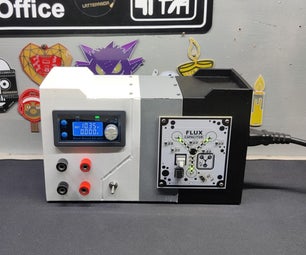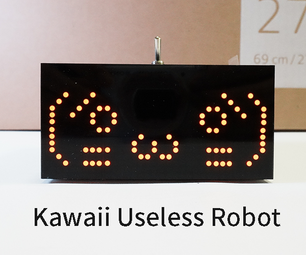Introduction: Night Vision Camera
Much like the Light of Eärendil guides Frodo in dark places, so too will your homemade night vision camera be your guiding beacon. Whether out in the woods camping with friends, capturing that elusive glimpse of a Scandinavian troll, or while on a top secret spy mission, this special camera captures even the most difficult shots in low-to-no light photographic brilliance.
Step 1: Go Get Stuff
You will need:
- Point and shoot digital camera (or similar)
- (x36) Super-Bright Infrared LED
- 220 ohm 1/4W Resistor
- Grid-Style PC Board
- 9V Battery Snap Connectors
- Project Enclosure (4x2x1)
- 9V Battery
- 1/4-20 x 1/2" bolt
- 1/4-20 nut
- Congo Blue photo gel
(Please note that some of the links on this page contain Amazon affiliate links. This does not change the price of any of the items for sale. I reinvest the money into materials and tools for future projects.)
Step 2: Remove the Case
Carefully remove the plastic case from around the camera.
Set the screw aside somewhere safe. I highly recommend labeling them so you know where to put them back.
Set the screw aside somewhere safe. I highly recommend labeling them so you know where to put them back.
Step 3: Disassemble
Continue disassembly by freeing the screen and main circuit board to expose the CCD and back of the lens assembly.
Step 4: Remove the IR Filter
Remove the IR filter from between the lens and the CCD. This is different in every camera. In some camera, this is a major ordeal, but in the one used here, it is simply a matter of gently shaking it out.
Step 5: Squares
Cut six to eight squares that are the same size as your IR filter out of the Congo Blue photo gel.
Step 6: Insert and Close
Stack these gels and insert them inside the camera where the IR filter was.
Reassemble the case.
Test to make sure it works by turning the camera on. Everything should appear to be displaying in the infrared spectrum.
Reassemble the case.
Test to make sure it works by turning the camera on. Everything should appear to be displaying in the infrared spectrum.
Step 7: Mark
Make three equally spaced rows of eight equally spaced marks covering the bottom lid of your project case. All of the marks should be roughly 1/4" apart.
Step 8: Drill
Drill all of the marks that you have just drilled using a 13/64" drill bit (or 7/32").
Step 9: Drill Once More
Flip the case on its longest side. Drill a 1/4" hole centered anywhere across this length.
Step 10: Camera Mount
Pass a 1/4-20 x 1/2" bolt from the inside of the case out. Fasten it in place with a washer and a nut.
Step 11: Trim
Using a sharp pair of scissors, trim 1/4" or so from each side of your circuit board, such that you are left with a long thin strip.
Note: You may want to use a dust mask while doing this, as circuit board dust is bad for you when inhaled. Cutting the board with scissors, greatly reduces, but does eliminate dust.
Note: You may want to use a dust mask while doing this, as circuit board dust is bad for you when inhaled. Cutting the board with scissors, greatly reduces, but does eliminate dust.
Step 12: Solder
Place all of your LEDs into your circuit board such that the anodes and cathodes line up in a row and the LEDs will fit into the holes drilled into the lid.
Once they are all placed, insert the LEDs through the holes in the lid from the inside out.
Flip the entire assembly over.
Bend down the first row of LED leads in the same direction and solder them all together in a single row. Repeat this for all consecutive rows.
Using wire, attach together the three rows of anodes with black wire.
Once they are all placed, insert the LEDs through the holes in the lid from the inside out.
Flip the entire assembly over.
Bend down the first row of LED leads in the same direction and solder them all together in a single row. Repeat this for all consecutive rows.
Using wire, attach together the three rows of anodes with black wire.
Step 13: Solder Some More
Attach 220 ohm resistors to each of the three rows of cathodes.
Connect the other ends of the resistors at a single point and solder them all together with the red wire from the 9V battery clip.
Solder the black wire from the 9V battery clip to one of the rows of anodes.
Connect the other ends of the resistors at a single point and solder them all together with the red wire from the 9V battery clip.
Solder the black wire from the 9V battery clip to one of the rows of anodes.
Step 14: Power
When you are ready to go, plug in the battery.
Step 15: Case Closed
Put the battery inside the case and fasten it shut.
Step 16: Night Vision
Screw the IR LED box into the mounting hole in the bottom of the camera.
Turn the camera on and then go take pictures of the night.

Did you find this useful, fun, or entertaining?
Follow @madeineuphoria to see my latest projects.











